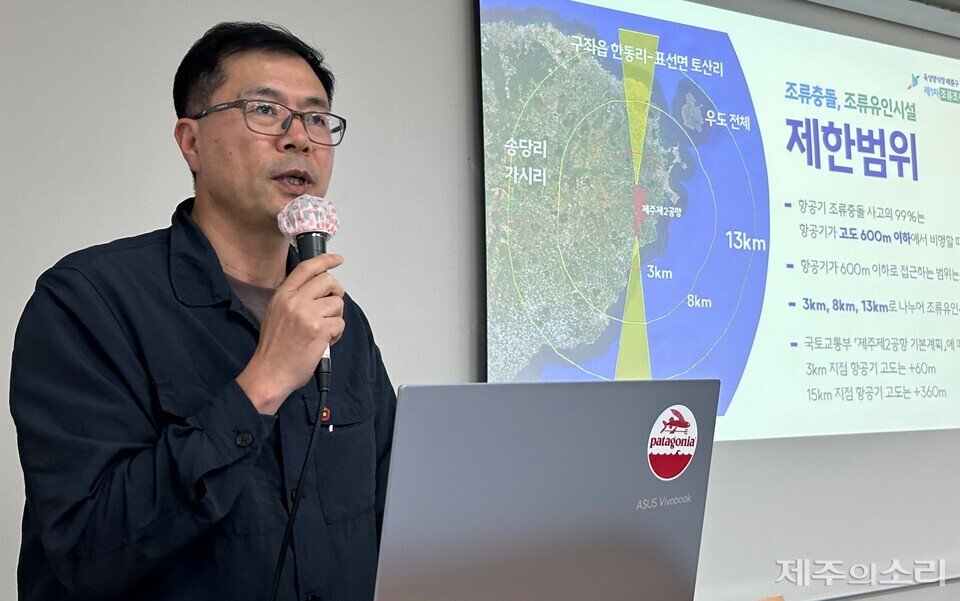"Bird Collision Risk Remains" Reignites Jeju Airport 2 Safety Debate
The Environmental Investigation Committee of the Emergency Citizens' Assembly releases the results of the first bird survey
"Poor bird survey, unsafe 2nd airport should be reviewed"
The Emergency Residents' Assembly held a press conference to announce the results of the first bird survey at the Jeju headquarters of the Democratic Trade Union Confederation on the 29th and called for a complete review of the second airport. ⓒJeju Voice
The Jeju Emergency Residents' Council (hereinafter referred to as the Emergency Residents' Council) has once again warned of the dangers of bird collisions, one of the biggest issues in the Jeju Airport 2 construction project.
The Emergency Residents' Council held a press conference to announce the results of the first bird survey at the Jeju headquarters of the Democratic Trade Union Confederation (DUCTU) on February 29, calling for "a complete review of the poor bird survey and unsafe Airport 2."
The Environmental Investigation Committee of the Jeju People's Assembly conducted a bird survey of 25 locations around the outlets of fish farms from February 4 to March 16, when winter migrants, including ducks and other birds of the duck family, gathered.
The bird survey is a method of observing and recording the number of birds by type and the direction of bird movement around the outlets of fish farms at sunrise, around noon, and at sunset.
"We concluded that land-based fish farms are stronger bird attractants than any other facility, and that unless the 149 fish farms within a 13-kilometer radius are relocated, Airport 2 will never be safe from bird strikes due to its location," the group said.
The Emergency Residents' Assembly held a press conference to announce the results of the first bird survey at the Jeju headquarters of the Democratic Trade Union Confederation on the 29th and called for a complete review of the second airport. ⓒJeju Voice
"It is false that birds migrate only along the coastline," he said, noting that "the largest number of ducks and geese moved in the direction of inland wetlands after it was completely dark."
"Even if birds migrate only along the coast, the risk of bird collisions is very high due to frequent migration and low aircraft flight altitudes, as there are numerous land-based aquaculture farms along the coastal approach surface of Xinshan, where aircraft take off and land."
"It is also false that the birds fly below 60 meters on average," he said, adding, "We have observed that they fly low at normal times, but when they expect an attack from relatives such as hawks or cats, they fly high, and when there is noise or vibration, they fly en masse."
Migratory bird nesting areas near the proposed site of Jeju 2nd Airport. Within a 13-kilometer radius is the migratory bird nesting belt on the east side of Jeju Island.
"MOLIT's claim that the problem will be solved by using dense filters to filter out the discharge of aquaculture farms is a crude and childish claim that has no dignity as a public institution," the group said, adding, "Then why is it necessary to restrict land-based aquaculture farms by designating them as bird attracting facilities?"
"Based on the results of the survey, we plan to further investigate the birds' main food, habitat, and mobility by dividing them into different groups," said the group. "MOLIT should immediately stop its plans to build new airports across the country, which will destroy the habitat of birds and endanger people."
According to Jeju Island, as of 2020, there were 387 land-based fish farms in the province, of which 249 were located in the eastern region and 138 in the western region. In particular, 149 farms are concentrated within a 13-kilometer radius of the airport.



